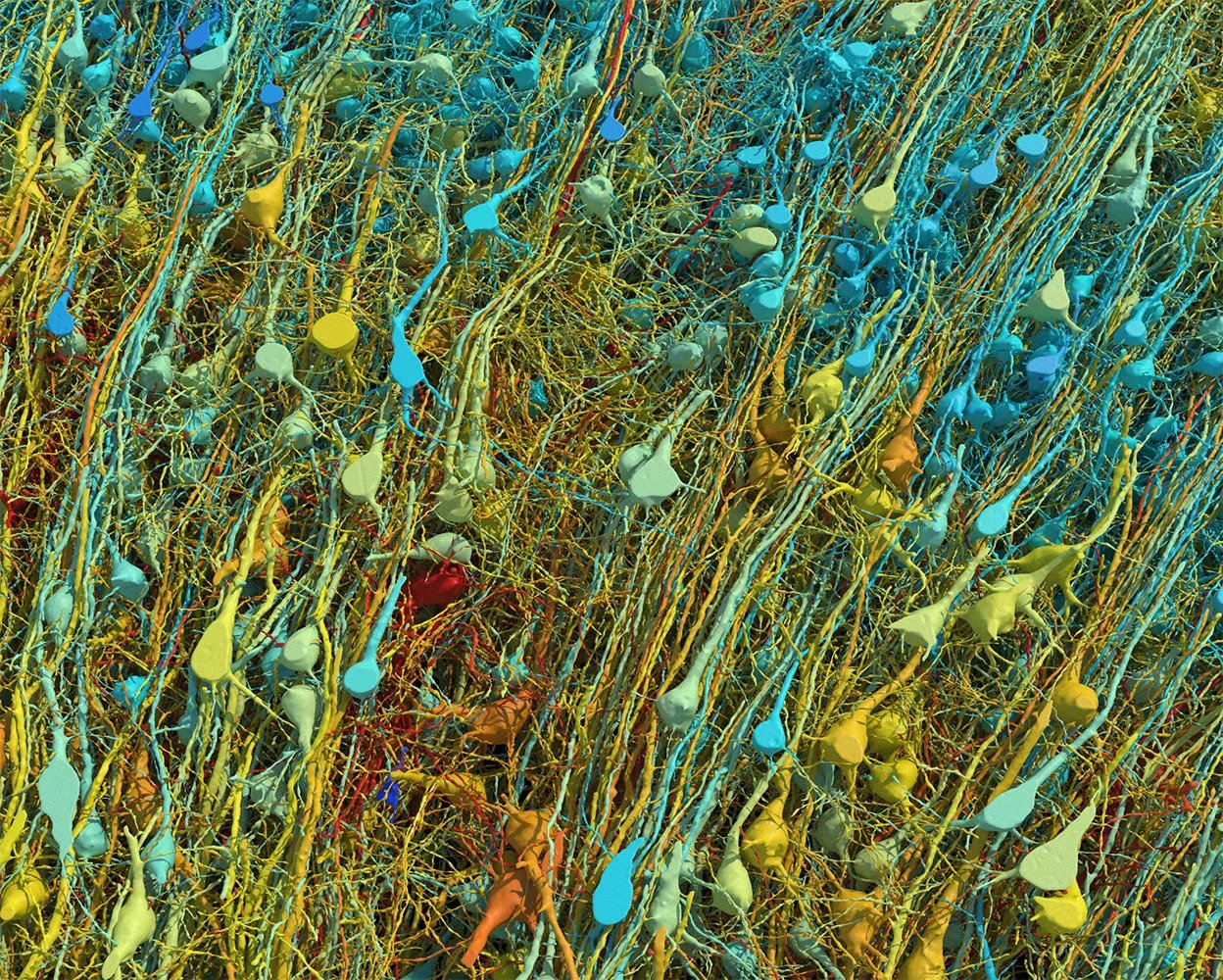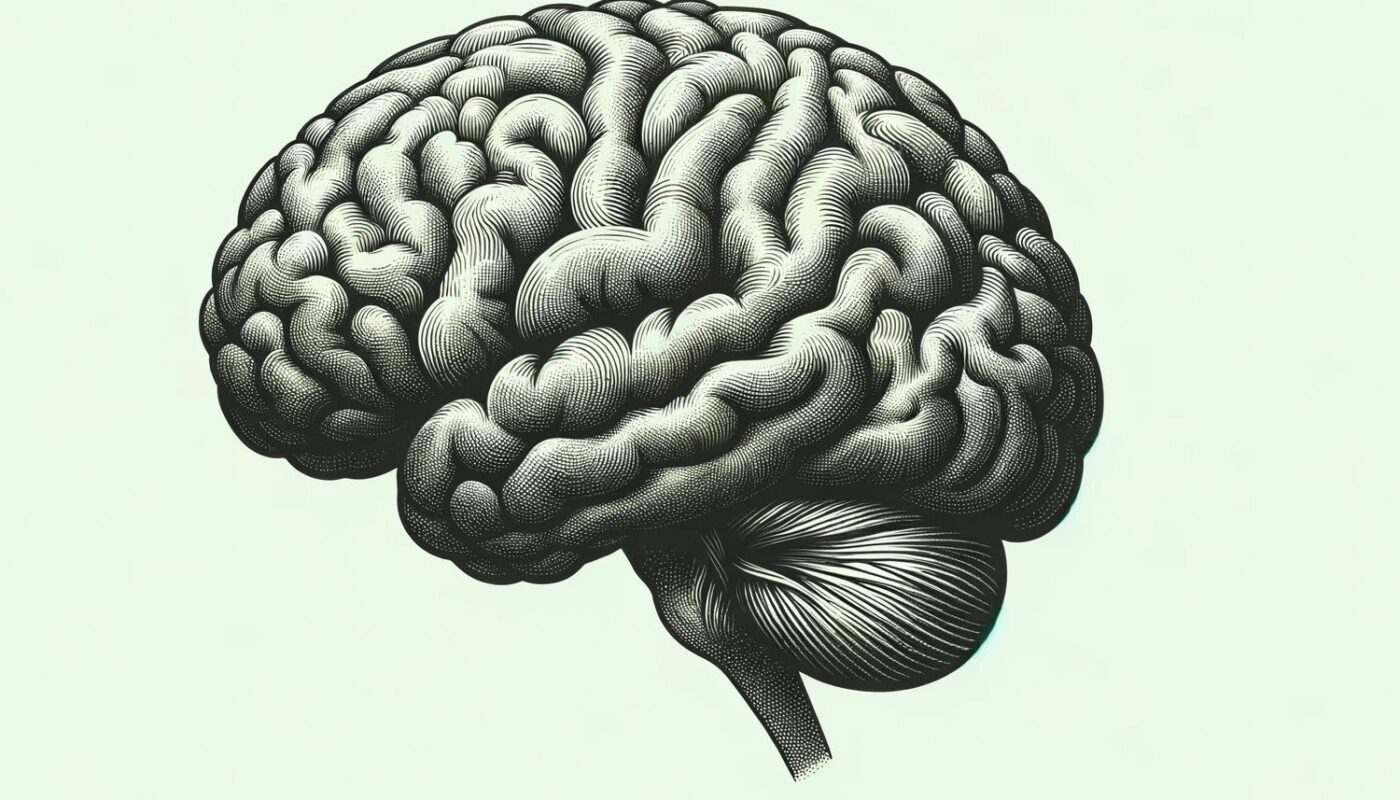Published in the journal Sciencethis study reveals an extremely detailed three-dimensional map of one mm³ of the cerebral cortex, the outer layer of the brain, responsible for complex functions: thinking, perception, memory or decision-making. This provides a unique insight into neurons and their connections as well as the characteristics of this complex area of our vital organ. An exceptional achievement, which opens new perspectives in understanding how the human brain functions. Indeed, the map reveals configurations of neuronal connections never before observed and will allow to refine our understanding of brain functioning.
A technical and scientific feat
The fragment of brain tissue studied comes from the cortex from a 45 year old woman with epilepsy, taken during an operation. This region of the brain, essential for learning, problem solving and processing sensory signals, has been carefully preserved and impregnated with heavy metals to facilitate its observation under a microscope.
Once collected, the tissue was cut into approximately 5,000 extremely thin slices, only 34 nanometers thick, the equivalent of the size of a small virus. In comparison, the diameter of the H5N1 virus is 80 to 120 nanometers. These ultrathin slices were then examined from all angles under an electron microscope. This allowed the researchers, led by Viren Jain, (neuroscientist at Google) and Jeff Lichtman (Professor of cellular and molecular biology) from Harvard University, to reconstruct the volume of the fragment in three dimensions. This is thanks to the use of artificial intelligence models.
This technique, called focused ion beam scanning electron microscopy (FIB-SEM), provides high precision in imaging brain tissue and allows scientists to observe neurons and their connections with a very high level of detail.
The choice of the cerebral cortex of an epileptic patient is not the result of chance. Indeed, this region of the brain is particularly involved in the generation of epileptic seizures, and the study of its structures could provide valuable insight into the mechanisms underlying this disease.

Unpublished neuronal observations
Careful analysis of the three-dimensional model by the Harvard and Google teams revealed neuronal configurations that are atypical to say the least. Indeed, some neurons established a staggering number of connections, up to 50 connections with other nerve cells, which is well beyond the norm usually observed.
An observation accompanied by its share of discoveries, also quite fascinating. The researchers observed neurons whose dendrites (extensions which allow cells to communicate with each other) formed complex nodes, tangled structures of great entanglement. This possibly suggests the existence of more sophisticated communication and information processing mechanisms than what we knew before. A discovery which could lead us to revise our current models of neural networks, based on more simplified observations.
Another interesting observation: pairs of neurons were identified, exhibiting almost perfect symmetry, like two mirrors facing each other. Generally, neurons are unique in their structure and function; the discovery of pairs of neurons with near-perfect symmetry thus challenges our current understanding of neuronal variability.
Implications for neuroscience
As Hongkui Zeng, director of the Allen Institute for Brain Science, points out, this mapping is a unique opportunity for the scientific community. This will then be able to explore the micro-circuitry of the human cortex much more easily than before. Yongsoo Kim of Pennsylvania State University is also full of praise for this achievement, saying that it “ provides unique details that could reveal new rules of neuronal connections and help decipher the inner workings of the human brain “.
This research will eventually make it possible to progress in the treatment and prevention of certain psychiatric and neurodegenerative diseases, such as Alzheimer’s or other forms of dementia. Researchers around the world must certainly be eager to exploit this veritable wealth of information. This incredible project proves one thing to us: that one of our most important organs is certainly the one we know the least about.
- Scientists from Harvard and Google have developed pinpoint-accurate brain mapping using focused ion beam scanning microscopes and AI.
- This mapping revealed details of the cerebral cortex that previously remained unknown.
- These new observations could help to better understand how the brain functions, and therefore potentially help in the prevention and treatment of certain psychiatric and neurodegenerative conditions.
📍 To not miss any news from Presse-citron, follow us on Google News and WhatsApp.




